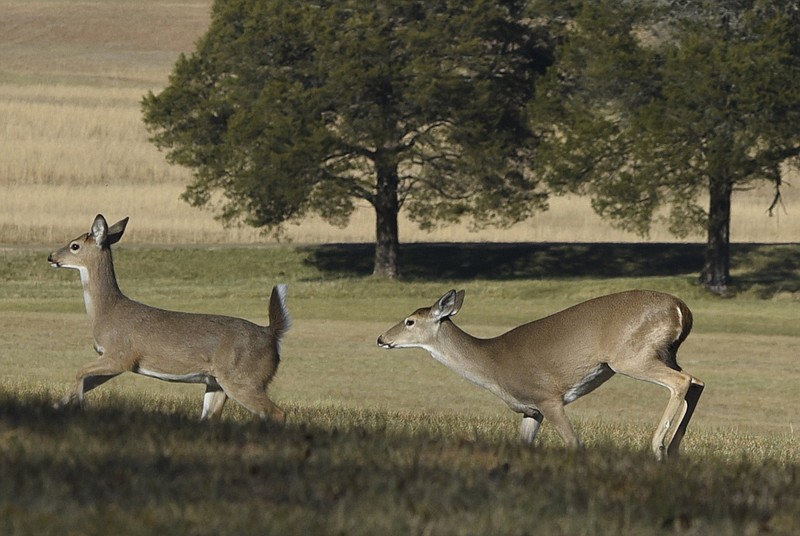Increased reports of dead deer throughout the state prompted the Tennessee Wildlife Resources Agency to release a statement in August saying epizootic hemorrhagic disease, or EHD, is the likely culprit.
The viral disease occurs in white-tailed deer throughout the United States and is relatively common in the late summer and fall, but this year's outbreak is the most severe in Tennessee since 2007.
James Kelly, deer management program leader for the TWRA, said the agency typically gets a few reports each summer of deer mortality across the state. This year, as of Aug. 30, Kelly had received approximately 300 dead deer reports.
"We're monitoring it. In 2007, that was a very severe outbreak, and we did see a drop in our deer harvest that year, indicating there were less deer for harvest during the hunting season," he said. "This one is above average in intensity, but so far it's not as bad as the 2007 outbreak."
Most of the reports are coming from northern and eastern counties, including Sequatchie, Bledsoe, McMinn and Hamilton counties.
Kelly said he expects mortality reports will peak in mid-September and subside after the first frost, which will kill the biting flies that transmit the virus.
The virus causes fever, respiratory distress and swelling of the neck or tongue. It's not always fatal, but the fever often causes deer to seek water, so bodies may be found near water sources.
While epizootic hemorrhagic disease has important implications for deer populations throughout the country, it shouldn't be confused with a less-common but more notorious deer disease, chronic wasting disease, said Mark Ruder, a scientist at the University of Georgia's Southeastern Cooperative Wildlife Disease Study.
"EHD is one of those things that's always a concern when it's happening, and it can be somewhat shocking and abrupt depending on how many deer are dying in a small area," he said. "Chronic wasting disease is pretty different - it can be almost silent in the population, because it takes a long time for clinical symptoms to emerge."
Unlike epizootic hemorrhagic disease, which is caused by a virus, chronic wasting disease is caused by a prion, which is a misfolded protein that can persist in the environment.
Currently, chronic wasting disease isn't present in Tennessee, but Kelly said it is of high concern to the agency, because it's found in three neighboring states: Arkansas, Missouri and Virginia.
The disease causes chronic weight loss that inevitably leads to death.
To keep chronic wasting disease out of the state, Tennessee has imposed restrictions on importing carcasses or transporting deer, elk and moose from areas where the disease is established.
Kelly said people should report dead deer sightings to local TWRA offices so the state can monitor disease progression.
There are no reported cases of chronic wasting disease in humans, but the Centers for Disease Control and Prevention recommends people don't eat meat from deer that are infected.
Epizootic hemorrhagic disease doesn't infect humans, and people cannot be harmed by handling or eating meat from infected deer.
Contact staff writer Elizabeth Fite at efite@timesfreepress.com or 423-757-6673.

